March 11, 2012
Come to love Nagoya more
Contemplate civic pride
During the Civic Pride session, we focused on ways people who live in Nagoya can love their city and take pride in their citizenship, energizing the region and local industry.
In 19th Century British cities, the idea of civic pride was highly valued and promoted. This Western term, “civic pride”, denoting both pride and affection towards one’s city, carries a slightly different nuance from the Japanese term, kyodo-ai or love for one’s birthplace or hometown. If, as a member of the community that makes up the city, you get involved in making it a better place to live, the city becomes more fun. Conscious of ourselves as “citizens”, we joined to think about communication, both citizen-to-citizen and citizen-to-city.
 Kaori Ito
Kaori Ito
Associate Professor, Tokyo University of Science
Doctor of Engineering
Civic pride is both pride in, and affection for, one’s town or city, and at the same time personal gratification based in the sense of ownership one builds by direct involvement in making that town or city a better place to live. To build civic pride in present-day society, in which people are a city’s assets, there are several points that can be made on the design front.
First is encouraging the people to participate in town planning, and creating community design that identifies civic engagement as a way to develop a sense of affection toward, and pride in, the city. Second is getting to know the city, and coming to love it. What’s important isn’t just that the citizens accept what is given to them but to offer a place in which they can get involved, while learning. Third is becoming a collaborator with the city. Tools that make citizens want to articulate the fact that they are members of the city help make them feel like partners. Finally, we come to citizens being loved by the city. Public spaces that are magnanimous in welcoming citizens and visitors produce a feeling of being loved by the city, and people actually start feeling that the city is their own.
Points of communication that will encourage interest among citizens can range from architecture to landscape to advertising. It’s important to put together the most effective means of expressing the message of the city, and to deliver civic pride in the way that best fits the location.
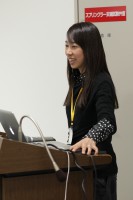
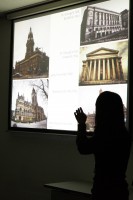
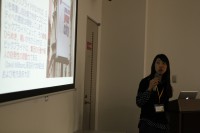
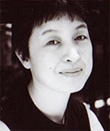 Nobuko Shimuta
Nobuko Shimuta
Project Editor/Design Producer
Part-time Lecturer, Tama Art University/Kuwasawa Design School
In thinking about the societal affluence of Japan in the future, which cities to choose, or how we should maintain them, civic pride, which makes conspicuous a city’s unique characteristics and improves its economy, becomes important. If people don’t feel the potential of a city, they won’t choose it. Having civic pride is taking responsibility toward, and pride in, “making it here” and “living here”.
A city is both an inner community and one that is open to the outside. In order to expand the potential of the unsettled individual-oriented community of modern Japan, we have to replace the traditional insular hometown devotion, and citizens have to be conscious of themselves as members of their cities. And we must achieve “delivery” and understanding both within and without the region, not only of the traditions and customs of the “unique”, but also of the many charms to cope with the era or economic environment.
With adequate design management, the reputation that leaves a place will return to a better place than that from which it started, like a boomerang. This will then act as a stimulus in the region, thereby raising self-awareness in the citizens, who, with an objective view of their region, will initiate development. People make the city, and the city in turn makes the people.
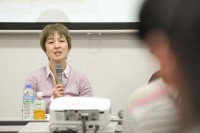
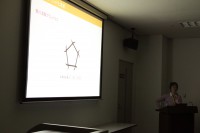
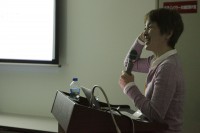
 Isao Suzuki
Isao Suzuki
Type Designer
President, Type Project
Part-time Lecturer, Aichi Prefectural University Arts and Music
Fonts have always reflected a strong sense of history. In that case, is it possible to make fonts reflect aspects of locality or climate? It was from this idea that sprang the plan for “civic fonts” and the creation of Kinshachi Font. It was released at the concurrent Nagoya Design Week with the catch copy, “That Font is more Nagoyan than the Nagoyan” and it has been used on a number of products promoting the regional character, like Nagoya-Dialect Karuta and Nagoya Curry with Chicken Wings. In the next phase, I’d like to leverage its distinguishing traits as a letterform, changing scales and crossing borders among fields and media to connect communication points in a format that is movable, wearable and sustainable.
Nagoya is one of a handful of iconic cities that has the power to excite. I believe it’s possible, without sacrificing quality, to replace the scenery, language and flavors that serve as the region’s unique cultural resources with something easily understandable; this strategic formation of an urban identity will gradually lead to civic pride. With that, we will foster our history and culture, and with the transference of memory, we will connect with one another.
Kaori Ito, Nokubo Shimuta, Isao Suzuki
Moderator: Eriko Esaka
Esaka: When we think about “civic pride”, several keywords or phrases come to mind, like “sense of ownership”, “spontaneity” and “inspiration”.
Suzuki: I think that without spontaneity, civic pride is basically impossible. When I returned to Nagoya from Tokyo, I saw the gap between the design work I was actually doing and the memories of my origin towards the Nagoya in which I was born and raised and wondered what I was doing. When I was worried about the Kinshachi Font, the concept of civic pride gave me insight.
Esaka: Civic pride also affects your choice of city.
Shimuta: When a person feels moved to think, “I want to live here”, I think he is thinking of his relationship with the place. It doesn’t matter what kind of life you’re talking about; if you don’t like the place, you won’t feel like participating in civic activities there. I think the sense that you’re putting your identity into a place is important when you’re choosing a city.
Ito: There are some places that you really like, even though you’ve only been there once, and by the same token, there are places that you may visit many times and never feel comfortable. In the end, “pride” is a personal thing. Unless we each feel our own “pride” in the treasures of our region, and willingly get involved in activities, the good things about our cities or towns cannot be construed as something of which we are proud.
Esaka: May I have your thoughts on the “delivery” of regional substance?
Shimuta: We tend to think that a piece of architecture is complete when the building is finished. However, completion does not include any overview of how the building will be managed. In English, the word used to express this is “delivery”. It’s important to be conscious of how regional communication achieves “delivery”.
Ito: We can’t just make “things”. We need to make “experiences”. If we don’t think about that process, the city might become a place we can’t feel is our own. I think we need to concentrate on that connectedness and how to make those “experiences” as we go forward.
Suzuki: I think it’s great to think of “delivery” as equivalent to “carrying expectations”. For the past several years, in young Tokyo designers I’ve strongly sensed a desire to realize a design that continues to function productively and inclusively even after the assigned project or product is delivered.
Esaka: Creative urban planning has to be based on sustainability or it cannot last. Nagoya, as a design city, is becoming a place that, thanks to the “delivery” of regional substance, isn’t just designing “things”, but is also enriching the city and the people. And as Nagoya becomes more interesting, we hope that visitors become ambassadors and share the allure of our city.
Thank you for your time today.
| Date: | Saturday, 10 March, 2012 2:00pm - 5:00pm |
|---|---|
| Venue: | Presentation Room, 6F Design Center Bldg., |
| Organizer: | Creative Design City Nagoya Organizing Committee [City of Nagoya, International Design Center Nagoya Inc., Nagoya Chamber of Commerce and Industry, Council of Chubu Design Organizations] |
Visitor: 46 | |
| Link: | |